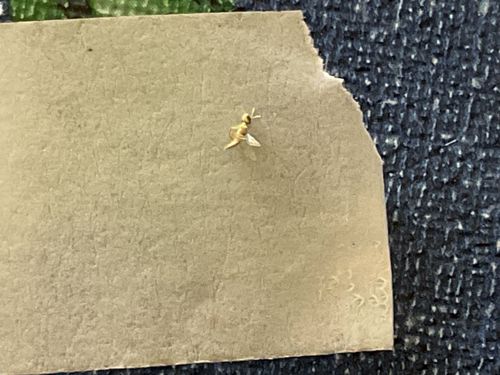Aphid Wasp
Scientific Name: Aphidius colemani
Order & Family: Order: Hymenoptera, Family: Braconidae (specifically in the subfamily Aphidiinae)
Size: Typically 1-3 mm in length, very small and delicate.

Natural Habitat
Agricultural fields, gardens, greenhouses, and natural areas where aphids are present.
Diet & Feeding
Adults feed on aphid honeydew and possibly nectar. Larvae are endoparasitoids of aphids.
Behavior Patterns
Parasitic wasps lay their eggs on or inside other insects (hosts). The wasp larvae then feed on the host, eventually killing it. This particular species, A. colemani, is known for its rapid reproduction and efficient parasitism of aphids. They are often found searching plants for aphid colonies.
Risks & Benefits
Benefits: A. colemani is a highly beneficial biological control agent for aphids, protecting crops and garden plants from destructive aphid infestations. They reduce the need for chemical pesticides. Risks: None to humans or pets. They do not sting humans.
Identified on: 8/13/2025